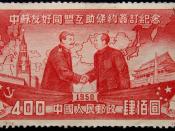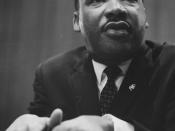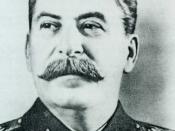People are naturally drawn to power and wealth. Power exudes an opulence, a bright center to an otherwise harsh or dreary existence. Over time social classes have emerged. In Egypt one may see a complex social pyramid, in India the same. For Rome one sees a simple social system. Plebeians and patricians, the "haves" and the "have-nots". This simple, two class system has evolved and one could almost say prospered over the generations that have adopted it. By the end of the 19th century (1895) writers like H.G. Wells portrayed societies so split that these societies seemed like different races to each other. In 1921 a play named RUR showed an ever decaying society where only robots did work. Finally, in the 1950's, Fahrenheit 451, by Ray Bradbury, portrayed a society of sameness and of a mixture between the governments of the time. Each of these documents had shown different "haves" and "have-nots" yet all portray one thing, a person can only fit into one category.
Since the 1950's literature has changed, as well as ideas and feelings toward the future, the have/have not groups are no exception. Today "have" groups are classified as having political power. This group is made up of the rich, and the upper middle class. The group is where the politicians, the lawyers, the doctors, and the very well educated come from. The "have-not" groups are more the non-college graduates, not saying that all are not college grads, just most, that these "have-nots" are the factory workers, the farmers and most labor intensive jobs. This classification leaves out the fact that most jobs today require a college degree, or are shipped out of country because of the ridiculously low labor rates in other nations. The rich, famous, and politically correct, as well as the upper...


